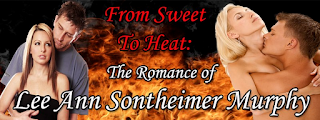A Few Thoughts On Writing Historical Romance
Without the past, neither the
present nor future would have a foundation.
I grew up in a rambling Victorian house in one of Missouri’s oldest
cities, a place where history is around almost every corner. My grandparents were my hands on caregivers
while my parents worked so their stories fired my imagination long before I
came across Dr. Suess. They discussed
the past, often inspired by the local newspaper’s daily remember when column,
over biscuits and coffee each morning.
And I listened as what would become my lifelong passion for history
became reality.
With such a background it’s not so
surprising I had a dual major, Communication Arts, emphasis creative writing
and history in college. Or that once my
writing career made the leap from freelancer to author I soon began writing
some historical fiction. Those who knew
me at any stage of my education or life aren’t surprised at all. My former history professors are
delighted. Most of those who earn a
bachelor’s degree in history either teach or fail to utilize their
knowledge. I found another way to use
mine.
I’ve been complimented by both
readers and reviewers at evoking a historical period. It’s tall praise for me because I strive to
bring the past to live in my stories until it almost lives, breathes, and walks
off the page. I want readers to feel
they’ve experienced another decade or imagine what everyday life might’ve been
like in the past.
To do this, research is required. When I begin to write any of my historical
novels, I start with research. I may
begin with some of the wonderful reference books designed for writers which
offer a thumb nail sketch into a period of time. For both Guy’s
Angel and In The Shadow of War, I
utilized The Writer’s Guide to Everyday
Life From Prohibition to World War II (Marc McCutcheon, Writer’s Digest
Books.) But the book, useful and
intriguing as it may be was just the beginning.
Since Guy’s Angel is set in my
hometown of St. Joseph, Missouri in 1925, I relied a great deal on my memories
of my late grandparents’ stories. For my
paternal grandparents, the 1920’s were “their era” as young adults. The neighborhood in the novel was once the
cradle to several generations of my family and through their tales, it was
almost as familiar to me in my imagined past as in my own reality.
I also used back issues of the local
newspaper, read accounts of the time to make sure my information about vintage
aircraft and flying would be correct, researched World War I flyers because Guy
Richter in the story was one, leafed through ads and catalogs of the time and
more. I made sure what my characters
wear is true to the period and verified what they eat and drink would have been
available. Old photographs from my own
family files, from various St. Joseph locations and the Library of Congress
“American Memory” collection all provided vital facts and detail for the
story. I watched 1920’s silent movies
and listened to music from the decade. I
read books popular at the time and cooked recipes from vintage cookbooks. I go deep in creating the past because it
matters to me.
I did the same for the 1940’s in In The Shadow of War, set in the small
town where I now live, once home to Camp Crowder better known to millions
around the world as “Camp Swampy” thanks to Mort Walker and his cartoon strip, Beetle Bailey. I did in my sweet historical family sagas, The Marriage Cure and What Fills The Heart from Astraea
Press. Those two, first two of more to
come, focus on the earliest pioneers to the Ozarks. Even my novella, Long
Live The King evokes both an early Elvis and the 1950’s. I have another
historical upcoming in September, Dust
Bowl Dreams, set in 1930’s western Oklahoma.
One reason I spend so much time and
am so meticulous about historical detail is nothing can jolt me from a story
faster than reading something incorrect or out of period. I may write from sweet to heat, from
contemporary to historical, but readers who opt for one of my novels set in the
past can be sure the facts are as correct as I can make them!
Find me
on any of my blogs:
A Page In The Life: http://leannsontheimermurphyblogspotwriterauthor.blogspot.com
Rebel Writer: Lee Ann Sontheimer Murphy: http://leeannsontheimermurphy.blogspot
Rebel Writer: Lee Ann Sontheimer Murphy: http://leeannsontheimermurphy.blogspot
Sea
Facebook: Lee Ann Sontheimer Murphy
Facebook: Lee Ann Sontheimer Murphy
Twitter: @leeannwriter
Author page:



.jpg)

Comments
Post a Comment
We would love to hear from you but hope you are a real person and not a spammer. :)